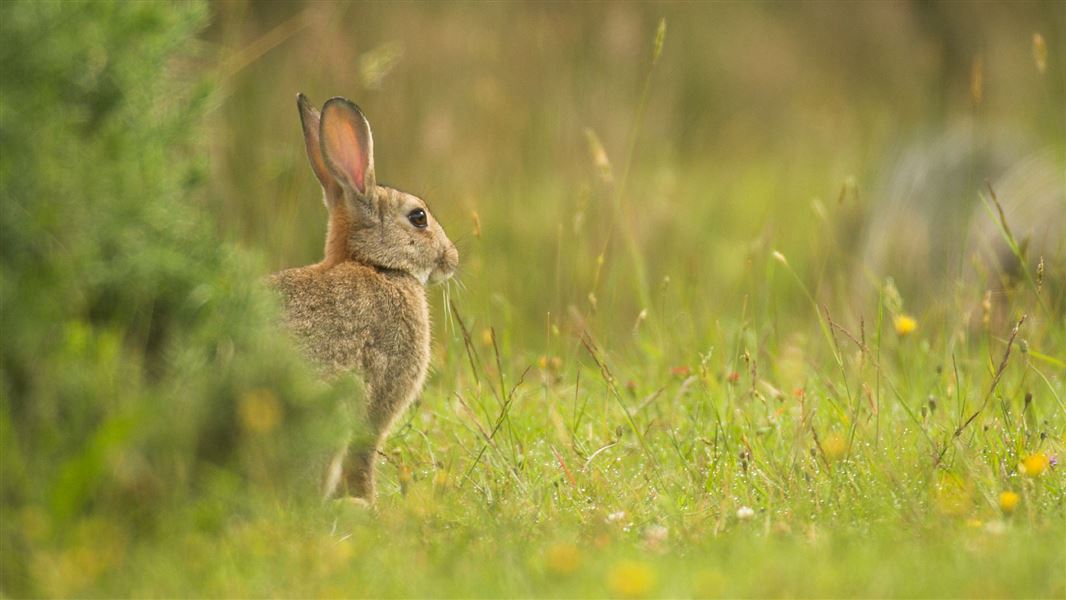After their introduction, European rabbits soon became widely distributed throughout the drier regions of both main islands and on many offshore islands. As herbivores, they are very significant agricultural and ecological pests.
Rabbits thrive in dryland and semi-arid environments, especially in New Zealand’s South Island. They can populate these environments in truly destructive numbers if uncontrolled. Reduction of populations is on-going and essential for the economic and environmental welfare of New Zealand.
Facts about rabbits
Domestic rabbits were commonly carried on sailing ships and sometimes released on islands as food for castaways. Rabbits were still imported as late as the 1860s to stimulate a domestic fur and meat trade. Establishment of wild populations was limited at first by lack of suitable habitat but increased pastoral farming assisted spread and growth in numbers. By the 1880s rabbits had become a serious threat to the fragile New Zealand economy.
Some wild rabbits may live up to seven years but life spans are generally much shorter, with high rates of natural mortality among young animals.
Rabbits have a high capacity for reproduction and female rabbits (does) may be pregnant for 70% of a year. Early-born does may breed in their natal year. They can produce a total of 20 – 50 young per adult doe. Females are also capable of adjusting litter-sizes to food supply so rabbit populations are capable of rebounding quickly from natural disasters or control pressures.
The rabbit threat
Rabbits are regarded primarily as an agricultural pest. They compete very effectively with livestock for pasture. On average, 7-10 rabbits consume as much as one ewe. Rabbits also provide a stable food source for mammalian carriers of bovine tuberculosis. Burrowing and scrapes cause extensive damage on erosion-prone soils, so much so that agricultural land can be rendered useless. Historically, rabbit-infested farms were abandoned because owners could not make a living.
Rabbits also threaten ecological values where they browse on vulnerable native plant communities, and where as year-round prey they support the mammalian predators which are contributing to the extinction of many New Zealand native birds and animals.
Rabbit control
Early attempts to control rabbit plagues inflicted on New Zealand one of our worst environmental disasters – the introduction of stoats, ferrets and weasels. These natural enemies of rabbits rarely controlled rabbit numbers effectively but they have been disastrous for our native species.
Very substantial government investments have been made historically to control rabbits through other means: trapping, shooting, poisoning, gassing, burrow-ripping, pathogens and dogs. Myxomatosis was introduced in the early 1950s as a form of pathogenic control but, unlike Australia, it failed to establish through lack of a suitable spreading organism.
Today, landowners, including the Crown, are responsible for controlling rabbits on their own lands. Regional councils monitor numbers regularly and enforce rabbit control when numbers exceed agreed limits, regardless of land tenure.
Rabbit haemorragic disease (RHD) was introduced illegally in 1997. This virus has since controlled rabbits naturally through annual knockdowns. Control is especially effective if landowners pursue survivors with shooting or poisoning.
Today we do not see the devastating rabbit irruptions of the past but very damaging population increases do occur. There is field evidence that RHD is losing its potency, providing the opportunity to import a more virulent form of RHD – RHDV1 K5.
- Rabbit biocontrol in New Zealand – RHDV1 K5 Environment Canterbury is part of a national consortium of pest management agencies leading a programme to import and release a new strain of rabbit calicivirus known as RHDV1 K5
- Other pest management programmes – MPI website.
